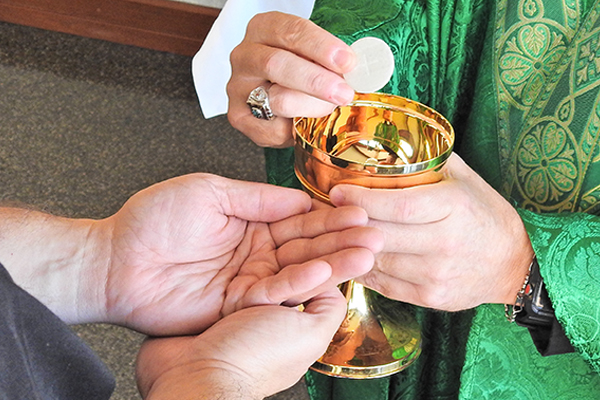Latest News
A message from Bishop Marshall:
As we watch the approach of Category 4 Hurricane Beryl – a strong storm so early in the season – we are reminded that we have traditionally sought the intercession…
Read MoreCatholic Charities: a core lead in Central Louisiana’s disaster readiness
by Cynthia Hawthorne, CCCLA Disaster Relief Volunteer Let me share with you a little about our Catholic Charities. Catholic Charities of Central Louisiana is a member of the 168 Catholic…
Read MoreNational Eucharistic Pilgrimage, June 7-8
You are invited to join us on an all-inclusive trip to New Orleans June 7-8th to participate in the Eucharistic Procession beginning on the steps of Notre Dame Seminary and…
Read MoreCatholics observe legislative session through lens of social justice at Faithful Citizenship Day
Catholics were powerfully present at the Louisiana State Capitol in terms of numbers of attendees and their commitment in standing up for social justice issues during this year’s Faithful Citizenship…
Read MoreHow to welcome your new pastor
Transitions can be difficult for everyone, saying good bye and getting to know and trust someone new can be a challenge. To help ease in the changes, below are ten…
Read MoreNew Catholic Schools Superintendent appointed
Bishop Robert Marshall, Jr. has announced the appointment of Sylvia Yancy Davis as Catholic Schools Superintendent, effective April 1, 2024. Mrs. Davis has served the diocese as Coordinator of Catholic…
Read MoreAcompaño: accompany in faith
by Blaine Phillips, Seminarian of the Diocese of Alexandria Acompaño…what is that? This Notre Dame Seminary mission immersion experience began in 1989 with a handful of seminarians under the leadership…
Read More3rd Annual Natchitoches March for Life
St. Mary’s Catholic School, The Minor Basilica of the Immaculate Conception Church and the Women’s Resource Center will host the third annual Natchitoches March for Life on Friday, Feb. 2.…
Read MoreConnecting Valentine’s Day and Ash Wednesday
Feb. 14, 2024 is Ash Wednesday. It also just so happens to be Valentine’s Day.There’s a unique contrast between these two holidays. Valentine’s Day relates to excess: cheesy love songs,…
Read MoreExtraordinary Ministers of Holy Communion Workshops
The next workshop(s) for Extraordinary Minister of Holy Communion will be held on the dates, times and locations below. The average time for the workshop is about three hours so…
Read More








